Dark Manhattan, produced by Randol-Cooper Productions and shepherded by Ralph Cooper and George Randol with direction credited to Harry Fraser, stands as a singular artifact of 1930s American cinema: a black-and-white feature with an all–African American principal creative team, unveiled on January 19, 1937, at Los Angeles's Lincoln Theater. While it is not conventionally catalogued as a film noir movie by period critics, Dark Manhattan offers a compact, potent study of ambition, corruption, and urban power that anticipates many motifs familiar to later film noir movie practitioners. This review places the film in context, explores its narrative and stylistic choices, and argues why, for students of classic cinema, Dark Manhattan deserves sustained attention precisely because it functions as a proto-film noir movie—a work that both arises from and reshapes the Harlem social landscape of its time.
Outline
- Introduction and context: Randol-Cooper, Harlem, and 1937
- Concise synopsis of the plot and central characters
- Cast, crew, and production details
- Themes: ambition, racketeering, loyalty, and betrayal
- Formal analysis: cinematography, editing, music, and staging
- Dark Manhattan as proto–film noir movie: a case for lineage
- Scene-by-scene critical readings of key sequences
- Reception, premiere, and legacy in African American film history
- Conclusion: why the film remains relevant to a film noir movie conversation
Introduction and Historical Context
Dark Manhattan was produced and written within an uncommon configuration for 1930s Hollywood: an independent enterprise led by African American producers and talent. Randol-Cooper Productions—Ralph Cooper and George Randol—produced the film. George Randol is credited as writer and executive producer, while Ralph Cooper served as co-producer and star. The film opens with a dedication to pioneers of Black stage and screen—names such as R. B. Harrison, Bert Williams, and Florence Mills—explicitly situating Dark Manhattan within a lineage of African American performance and indicating an institutional ambition to assert presence in cinematic production. The film’s world premiere at the Lincoln Theater in Los Angeles’s Central Avenue Corridor was emblematic of its cultural reach: a film made by and for communities that had limited mainstream representation in the studio system.
Seen through a contemporary lens interested in genre genealogy, Dark Manhattan presents a narrative of organized urban vice—the numbers racket—and a young man’s ruthless ascension that maps onto motifs later developed by canonical film noir movie directors. The film’s compact seventy-minute runtime (69 minutes, according to production records) concentrates characters, conflicts, and moral ambiguities into a tight dramatic arc and invites discussion of how the film both conforms to and departs from later noir conventions.
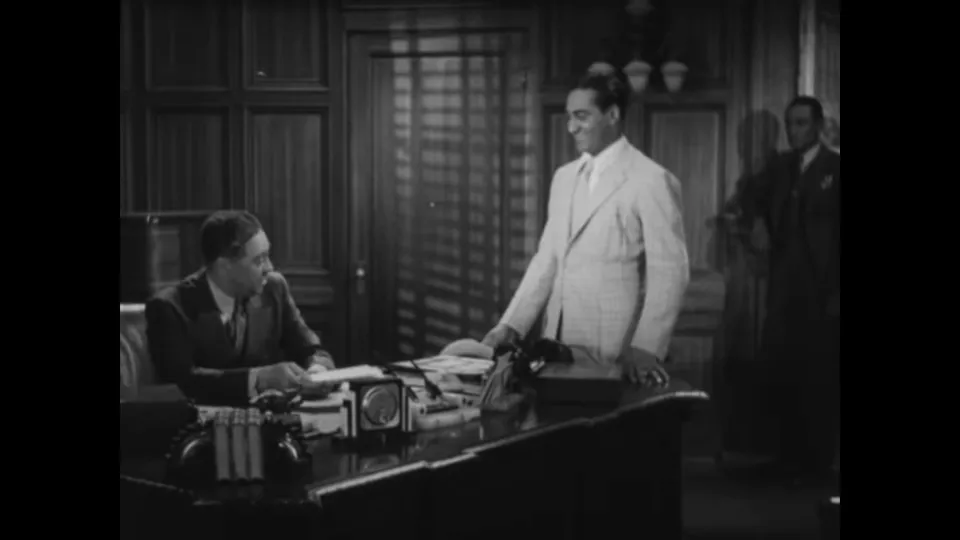
Synopsis: Power, Numbers, and Harlem
At the center of Dark Manhattan is Curly Thorpe (played by Ralph Cooper), an energetic, ambitious youth from the streets who is introduced through a pattern of small-scale hustles and neighborhood respect. Curly’s rise begins with a meeting between local operators and an established numbers figure, Larry Lee (Clarence Brooks), who runs a legitimate front of sorts—"the biggest number bank in Harlem"—built on display of respectability and the pretense of business decorum. Lee’s bank shields certain accounts and protects clients, but his ill health opens opportunity.
When Larry Lee is felled by illness and ordered to rest by a physician, he entrusts the running of his operations to Curly. That transfer of authority is more than administrative: it is a handing over of moral and criminal currency. Curly moves into Lee’s private office and quickly modernizes and intensifies the operation. He demands duplicate reports and insists on direct oversight, demonstrating an appetite for control and a willingness to impose discipline on the informal networks that previously sustained the numbers game.
As Curly consolidates power, tensions escalate. Banking associations mobilize and the district attorney launches an investigation into "banking numbers," while street-level figures and established racketeers—men who previously had autonomy—begin to chafe under Curly’s energetic reforms. The film tracks several major flashpoints: forced redistributions of accounts, physical intimidation, police scrutiny, and a crescendo of violence when Curly's rise triggers counteroffensives from entrenched players and rival gangs. By the film’s later sequences, neighborhoods burn, offices are torched, and alliances fracture as Curly pushes forward or is forced to defend his claims.
Through these events, Curly’s relationship with Flo Gray (Cleo Herndon), a nightclub singer and the film’s romantic anchor, humanizes the protagonist while exposing the personal costs of his ambitions. Flo emerges as both supporter and conscience, offering the dream—home, calm, domesticity—against which Curly’s hustle is measured, even as she is entangled in the glamorous and dangerous nightlife that sustains Harlem’s economy.
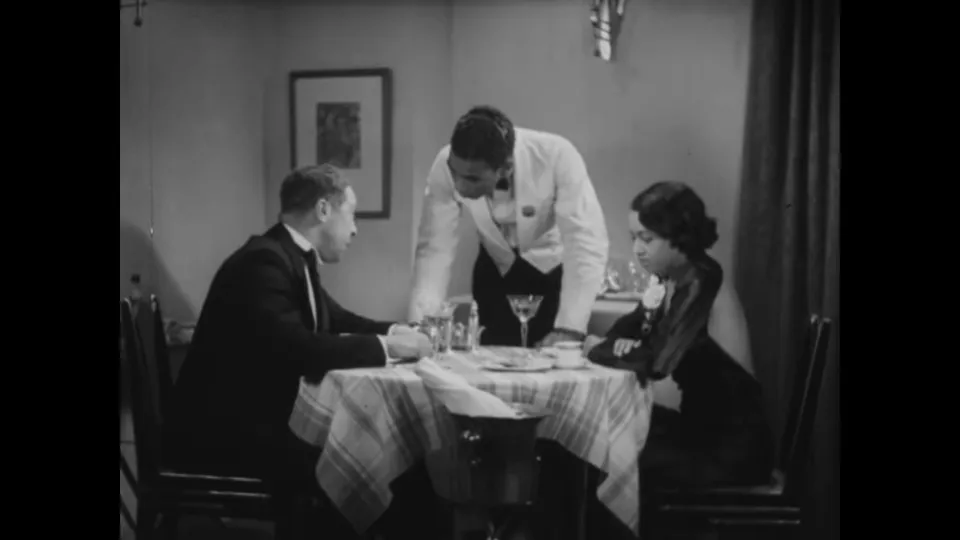
Cast and Principal Crew
Dark Manhattan’s credited principal cast (as provided by period documentation and production notes) includes the following performers and crew members:
- Ralph Cooper as Curly Thorpe — co-producer, star, and public face of Randol-Cooper’s ambitions.
- Cleo Herndon as Flo Gray — Curly’s romantic interest; a singer and symbol of Harlem nightlife.
- Clarence Brooks as Larry Lee — the ailing, established number banker who sets the plot in motion.
- Jess Lee Brooks as Lieutenant Ballot — law enforcement figure who responds to the escalating violence.
- Sam McDaniel as Jack Johnson — a neighborhood operator connected to Curly’s origins.
- Corny Anderson as Attorney Brown — the legal mind within Lee’s circle.
- Rubeline Glover as Miss Hall — office manager figure who facilitates Curly’s entry into the operation.
- James Adamson as Lem — one of the community figures affected by the power struggle.
Key production credits include:
- Directed by: Harry Fraser
- Written and executive produced by: George Randol
- Produced by: Ralph Cooper and George Randol
- Cinematography: Arthur Reed
- Edited by: Arthur A. Brooks
- Music by: Ben Ellison and Harvey O. Brooks
- Production company: Randol-Cooper Productions (only film made by the company)
- Release: January 19, 1937 (Lincoln Theater premiere)
The production situates itself explicitly within African American cultural history by dedicating the film to stage pioneers whose careers opened doors for performers in later decades. That formal acknowledgment frames Dark Manhattan as something more than entertainment: it is a statement of cultural lineage.
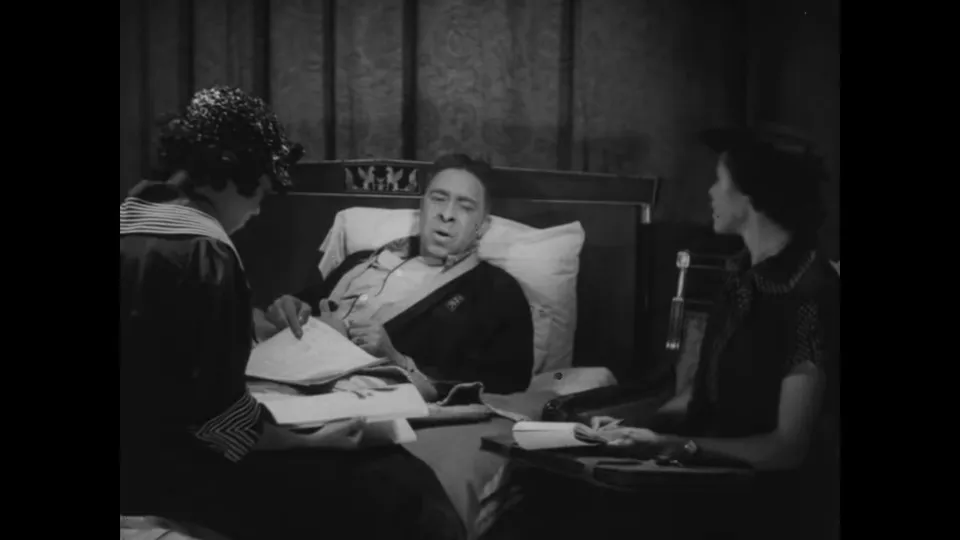
Themes: Ambition, Control, and the Ethics of the Numbers Game
At its core, Dark Manhattan advances a handful of interlinked themes that would resonate in many urban dramas to follow. As the narrative centers on the numbers racket, the film examines:
- Ambition and social mobility: Curly’s hunger is social as well as financial. He seeks to displace older hierarchies and claim a share of the economic engines operating beneath Harlem’s surface. That aspiration drives the plot more than pure greed—Curly wants stability and recognition.
- Order and disorder: Curly imposes corporate forms—duplicate reports, systematic oversight—onto an informal, volatile trade. That imposition of bureaucratic order onto an illicit economy becomes a central tension and prefigures themes in later crime noir narratives.
- Loyalty and betrayal: The film stages a series of realignments—bankers demand their accounts returned, rivals conspire—in which trust is both currency and casualty.
- Public scrutiny and policing: The district attorney’s investigation and police mobilization dramatize how state forces interact with community economies; the film does not offer a simple moral verdict on law enforcement, but it shows how investigations complicate intra-community dynamics.
- Gender and performance: Flo Gray’s role as singer and public figure anchors Curly’s private life. Her public performances—her voice and stage presence—highlight a gendered economy of labor, celebrity, and emotion in Harlem’s nightlife.
There is a moral ambiguity that Dark Manhattan refuses to resolve neatly. Curly is not a one-dimensional villain; he is an energetic protagonist who both challenges corrupt practices and reproduces coercive ones when it serves his ascent. That ambiguity places the film in critical conversation with the later film noir movie emphasis on compromised heroes and morally ambivalent choices.
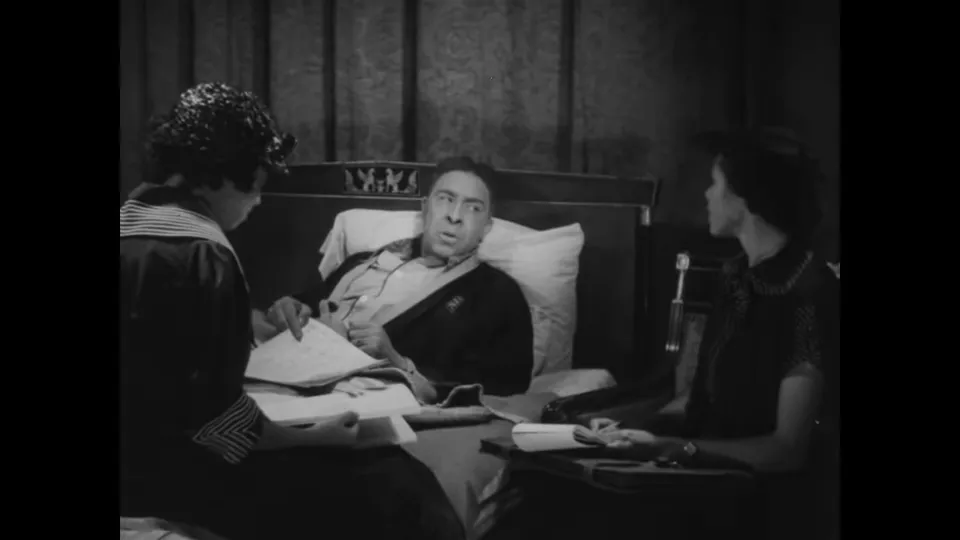
Style and Technique: Look, Sound, and Editing
Although produced outside Hollywood’s studio system, Dark Manhattan benefits from robust technical craft. Arthur Reed’s cinematography relies on high-contrast lighting and composed interiors that give the office sequences both texture and menace. The camera framing privileges confrontations—face-to-face meetings, exchanges of documents, and the slow accretion of power enacted through paperwork—over chase sequences or extended set pieces, which lends the film the concentrated intimacy of a theatrical crime drama.
Arthur A. Brooks’ editing maintains brisk pacing across the film’s 69-minute runtime. Scenes cut economically from meetings to street interactions, allowing differences of scale—club interiors, offices, streets—to cohere into a city-scale portrait without losing narrative momentum. Ben Ellison and Harvey O. Brooks provide musical accompaniment that highlights the contrast between nightlife’s glitter (Flo’s singing sequences) and the office’s sterile discipline. Music functions here not only as mood but also as a form of communal identity: nightclub songs mark the social stakes at play when men decide to change the rules of a local economy.
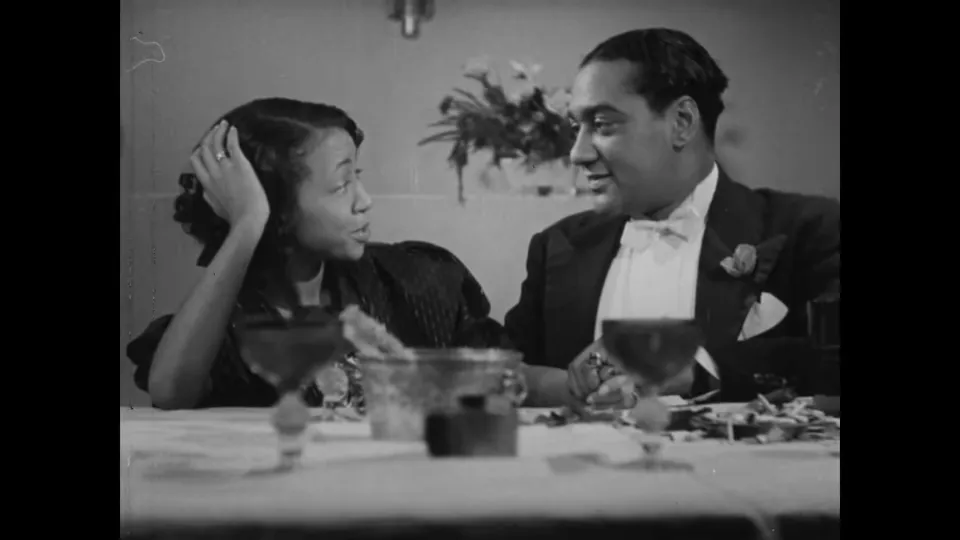
Dark Manhattan and the Film Noir Movie Lineage
One of the central critical questions for modern viewers is how Dark Manhattan relates to the film noir movie tradition that would flourish in the 1940s and 1950s. Strictly speaking, noir as a named movement is a postwar label; Dark Manhattan predates the canonical noir cycle by nearly a decade. However, critics attentive to style and theme can discern in Dark Manhattan a set of features that prefigure noir:
- Urban underworld: The film centers on the economics of illicit labor within a cityscape—numbers, runners, and office fronts—that later noir films would treat with moral fatalism.
- Compromised protagonist: Curly is a driven figure whose moral compromises accelerate the plot; the film’s interest lies in his choices rather than in a naïve moral condemnation.
- Ambiguous authority: The film offers no simple praise of law or business; instead, it depicts institutions—bankers, police, and racketeers—in conflicting lights, anticipating the ambivalence of law and order in noir.
- Stylistic predilection for shadow and interiority: While not as formally extreme as later noir chiaroscuro, Dark Manhattan uses lighting and interior compositions to suggest claustrophobia and power struggles, a key film noir movie device.
For these reasons, the critic can reasonably label Dark Manhattan a proto–film noir movie or treat it as a close relative to the later film noir movie canon. The phrasing matters: Dark Manhattan is not a textbook example of film noir movie aesthetics, but it is a historically significant ancestor that explores similar moral terrain from a different social vantage point. Importantly, it does so centered on Black characters and creators—voices largely excluded from mainstream noir narratives—which makes it doubly important for genre historians who want a fuller picture of American cinematic modernity.
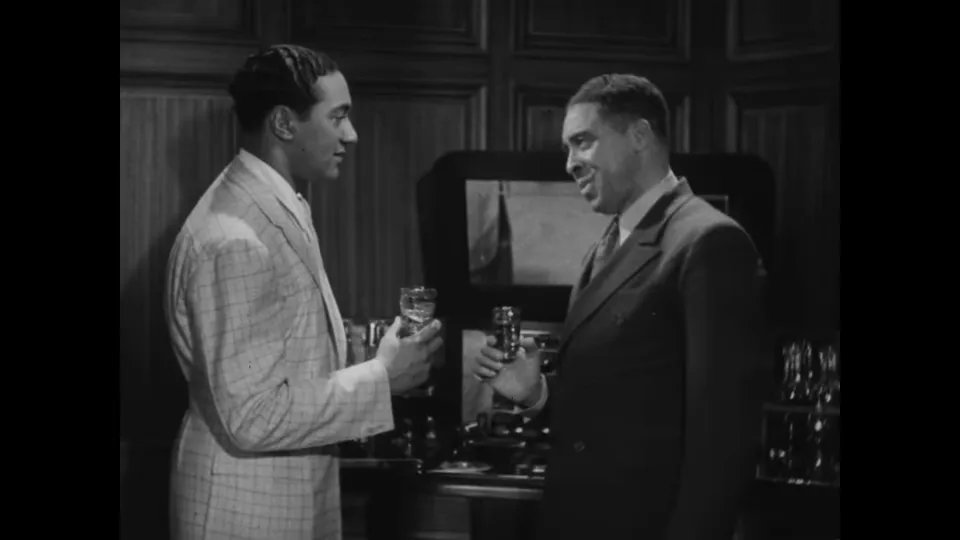
Scene-by-Scene Critical Readings
Opening and Office Politics
The film opens in a banker’s office where the conversation alternates between gentlemanly banter and hard transactions. This juxtaposition—of cultivated manners and street-level coercion—sets Dark Manhattan’s tonal register. Early dialogue about tightening accounts and closing those who fail to meet quotas establishes the central conflict: control over stretches of the city and the legal/illegal economic exchanges that underpin them.
"We're the biggest bank in the whole of Harlem... the squarest number banker in all of Harlem."
This line, uttered early, is more than boast; it is a signifier of legitimacy for an illicit trade. The spectacle of 'legitimate' banking language applied to a subcultural economy points to the film’s interest in how language, paperwork, and appearances function as instruments of power.
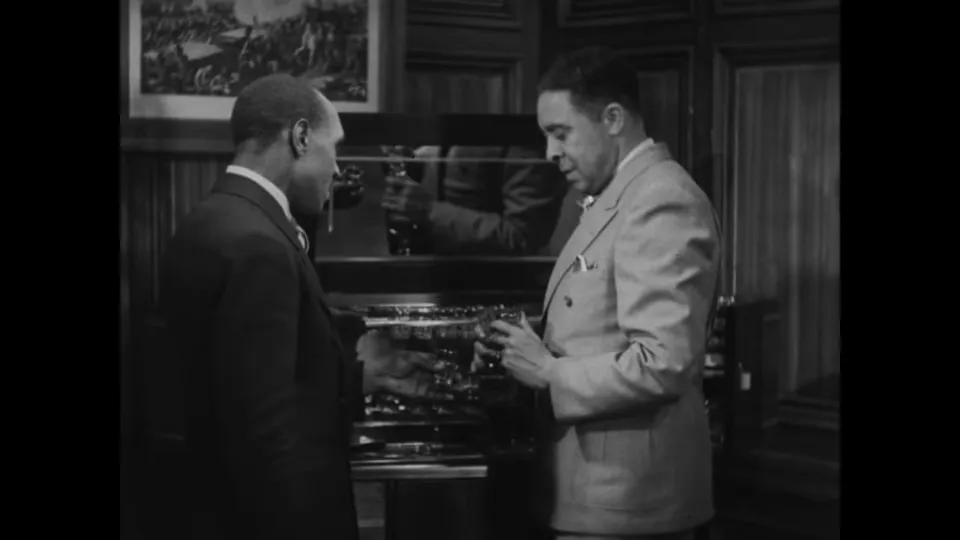
Curly’s Arrival and Transformation
Curly’s introduction is staged as an apprenticeship. He is observed and recommended by neighborhood figures, then formally inducted into Lee’s operation. The scene where Curly meets Larry Lee in a richly appointed office is pivotal: it is not merely a job interview, it is a rite of passage into a different scale of power. Curly’s preference for ginger ale—his refusal of stronger drink—registers ambition tempered by discipline. He is ready to act with a clear head.
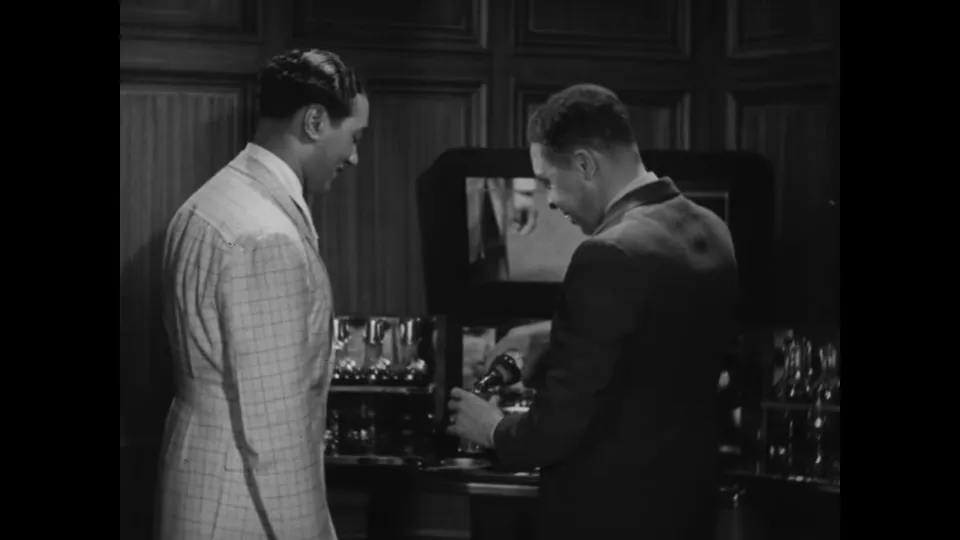
Flo Gray, Stage Presence, and Private Life
Flo Gray’s club sequences—her singing and her private conversations with Curly—offer the film’s most direct emotional counterpoint to the office sequences. She is framed as both the dream and a tether: she can offer the domestic tranquility Curly lacks, but she is also embedded in the nightlife economy that legitimizes Curly’s world. Their interactions are short, melodically punctuated by performance moments, and crucially, they humanize Curly. He does not aim solely for money; he wants the social stability that money promises.
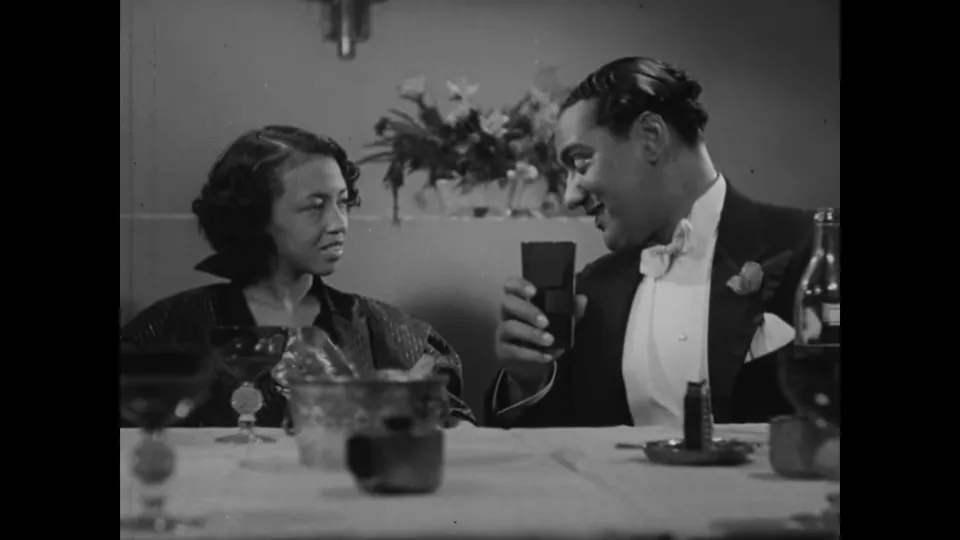
Escalation: Investigation and Violence
The narrative tension crescendos as the district attorney orders investigations and police mobilize to 'clean up' the numbers scene. This external pressure interacts uneasily with internal rivalries: bankers demand restitutions, and rival operators like Butch Williams attempt to take advantage of the power vacuum. The investigation functions as a catalyst, forcing alliances into the open. When offices are burnt and men are beaten, the film’s moral complexity becomes visceral: the purported victims and perpetrators swap roles with dizzying speed.
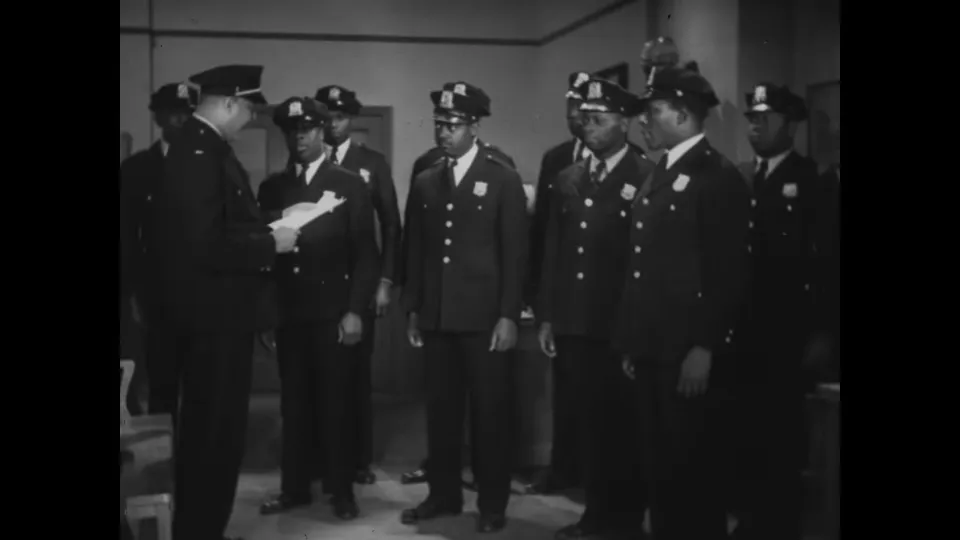
Climax: Confrontation and Consequence
In the film’s closing sequences, Curly confronts the cost of institutionalizing the numbers operation. He must defend an empire that is half business, half social network. The final scenes—fights staged in club settings and streets—are violent and noisy; they are cinematic because they are social. The film refuses traditional redemption arcs. Curly’s fate is ambiguous, underscoring a noir-adjacent sensibility: an energetic protagonist trapped by the very system he seeks to control.
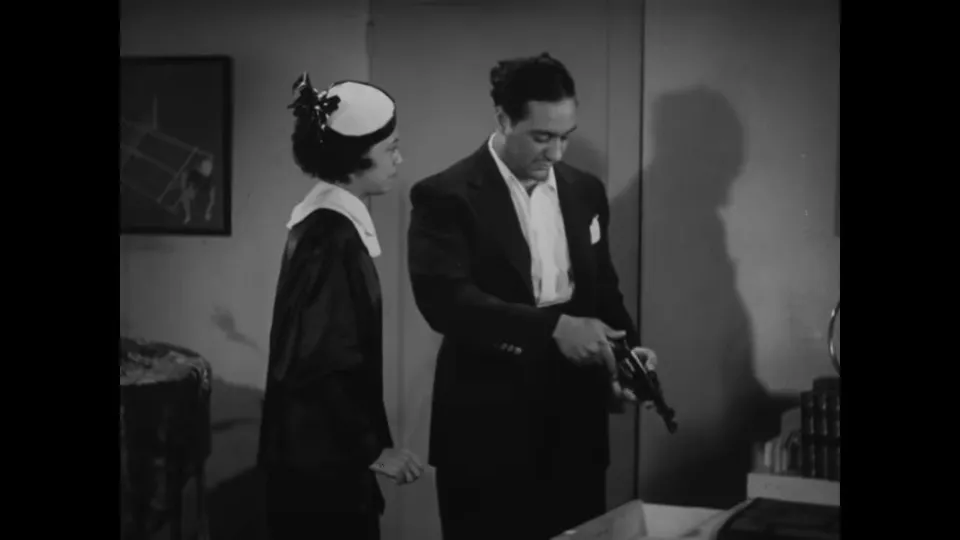
Performances and Characterization
Ralph Cooper’s Curly is charismatic and aggressive in equal measure. Cooper—no stranger to theatrical work and credited with co-producing the film—gives Curly the physicality of confidence, the quickness of street intelligence, and a performative ease that helps the viewer understand why others follow him. Cleo Herndon’s Flo is a restrained counterweight: she is glamorous and morally prudent in the ways she advises Curly to seek rest and a simple home. Clarence Brooks as Larry Lee accomplishes two competing roles: he must be both the established, respectable businessman and the ailing man whose withdrawal catalyzes the action.
Collectively, the ensemble delivers a variety of tones—from office comedy to violent showdown—that keep the film moving. The actors work within the film’s modest production constraints but extract pathos, humor, and menace where the screenplay requires it. This grounding in performance is one reason Dark Manhattan reads as earnest and engaged rather than opportunistic or exploitative.
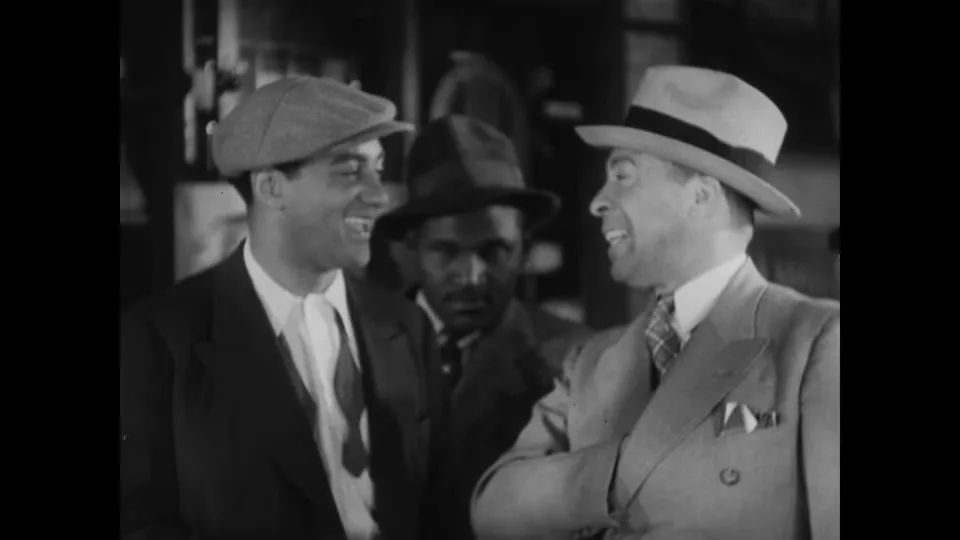
Reception, Premiere, and Cultural Legacy
Dark Manhattan premiered on January 19, 1937, at the Lincoln Theater in Los Angeles, an event framed as a cultural milestone for African American production in cinema. The premiere and subsequent circulation placed the film squarely within the Central Avenue Corridor’s cultural life, and the film’s dedication to early Black theatrical pioneers connected the project to an ongoing effort to craft a cinematic tradition rooted in Black creative labor.
Although Randol-Cooper Productions produced only this one feature, Dark Manhattan’s impact is larger than its production credits imply. The film’s depiction of Harlem life and organized vice makes it a crucial primary document for historians of urban culture, while its independent production exemplifies how African American creatives worked around, within, and against the studio system. The film is discussed in scholarly work—most notably in studies of Harlem's visual culture and Black filmmaking history—and it remains a subject of interest for critics tracing the development of urban crime dramas and their eventual evolution into the film noir movie canon.
Why Dark Manhattan Matters to Film Noir Movie Students
For students and enthusiasts of the film noir movie, Dark Manhattan offers several unique pedagogical opportunities:
- Diversifying noir genealogy: It complicates simple chronologies that locate noir exclusively in postwar, studio-produced thrillers by showing noir-adjacent themes emerging earlier and in different social contexts.
- Black agency and genre: It centers Black agency in a story about economic systems, thereby challenging the racial blind spots that later film noir movie histories often display.
- Urban ethics and representation: Dark Manhattan insists that questions of legality, legitimacy, and respectability are raced and classed; the film noir movie scholar gains from studying these intersections.
As a proto–film noir movie, Dark Manhattan invites comparative readings: juxtaposed with 1940s noir, it illuminates continuities of theme (moral ambiguity, urban corruption) and discontinuities of perspective (racially centered narratives and community-focused economies).
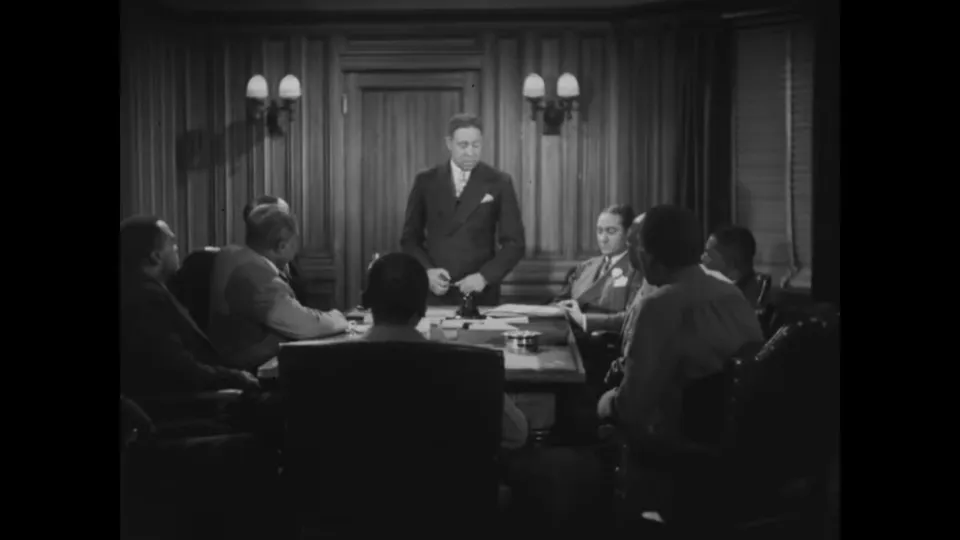
Critical Appraisal: Strengths and Limitations
Dark Manhattan’s primary strength is its historical positioning: the film offers a rare 1930s cinematic voice shaped by African American producers and performers. Its compact storytelling and sharp focus on power dynamics make it dramatically effective. Ralph Cooper’s central performance and George Randol’s script combine to produce a story that is brisk, focused, and serious about its stakes.
Limitations are largely those of independent production: sets and technical resources cannot match the polish of big-studio pictures of the era. Some sequences—particularly large crowd scenes—feel staged, and pacing occasionally sacrifices depth for forward propulsion. But these shortcomings do not undercut the film’s cultural and critical value. If anything, they highlight the resourcefulness of the filmmakers and the film’s determination to tell a story on its own terms.
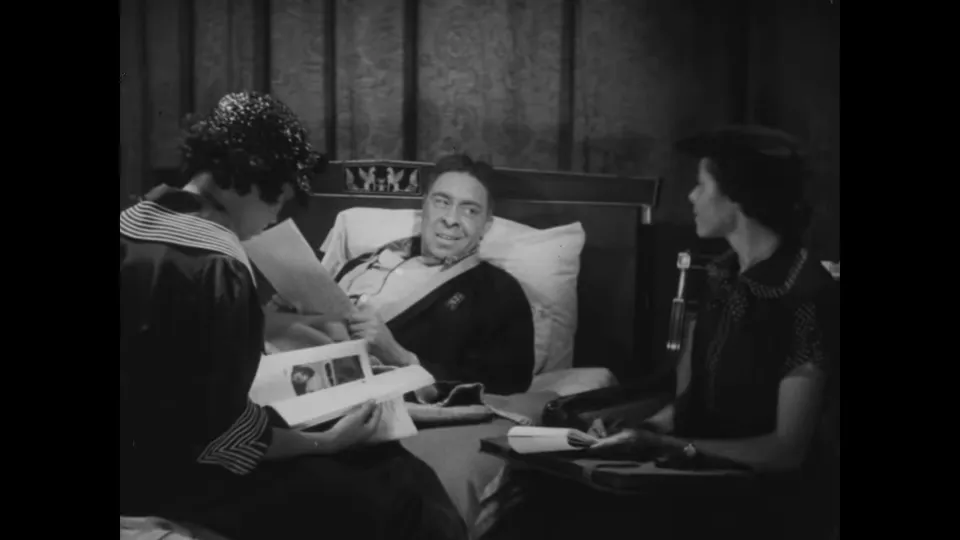
Teaching Uses and Research Directions
Dark Manhattan is a valuable primary text for courses and research agendas that intersect with:
- African American film history and the economics of independent Black production
- Urban studies and representations of informal economies in cinema
- Genre studies, specifically proto-noir readings and the social genealogy of noir
- Performance studies, focusing on how stage-trained actors transferred techniques to early film
Researchers can pair Dark Manhattan with later film noir movies to analyze continuities in visual style and thematic preoccupations; alternatively, pairing Dark Manhattan with contemporaneous Harlem photography and journalism renders a fuller picture of how the numbers racket was perceived and portrayed across media during the 1930s.
Selected Quotations and Their Critical Weight
"We're the biggest bank in the whole of Harlem... the squarest number banker in all of Harlem."
When spoken, this line encodes the film’s strategy: using the language of legitimate banking to naturalize an illicit economy. The phrase is performative—words that create the reality they describe.
"I've got half of the bank, at least half the profit."
Curly's assertion of partnership reveals the film's central paradox: authority is declared through rhetorical ownership even as it must be defended physically. Such language—an insistence on shares and division—anticipates the corporate vocabulary of organized crime movies and later film noir movie narratives that detail spoils, betrayals, and fiscal motives.
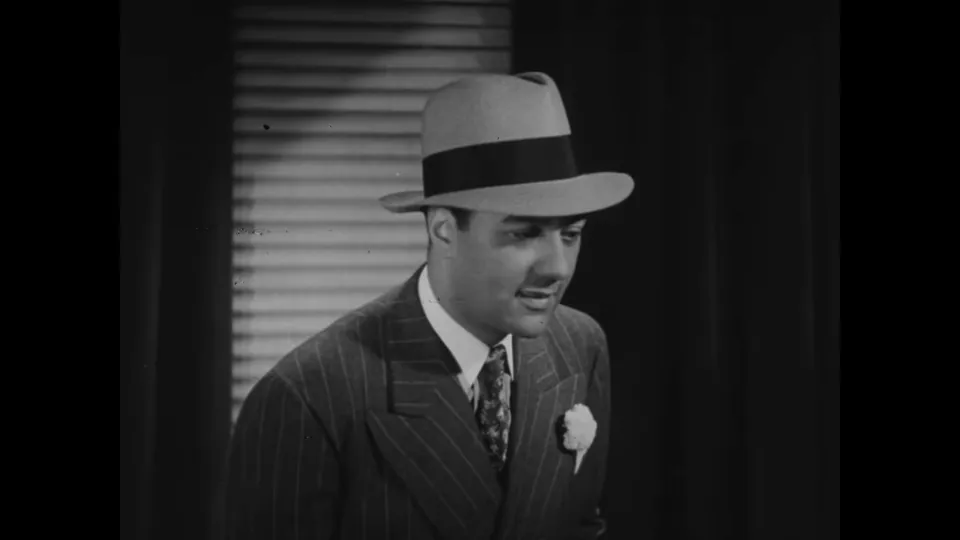
Conclusion: Dark Manhattan’s Place in the Film Noir Movie Conversation
Dark Manhattan occupies a distinctive position in American film history: an independently produced, Black-led 1937 drama that dramatizes a Harlem underworld and prefigures many motifs associated with the film noir movie. It does not belong to noir in the narrow, periodized sense—but it participates in a larger set of aesthetic and ethical concerns that make noir compelling: moral ambiguity, urban claustrophobia, procedural violence, and the tragic consequences of ambition unchecked by communal responsibility. For scholars and cinephiles seeking to broaden the genealogy of the film noir movie, Dark Manhattan is a necessary and rewarding object of study.
Its production by Randol-Cooper Productions, the leadership of Ralph Cooper and George Randol, the direction of Harry Fraser, and its premiere at the Lincoln Theater together tell a story of cultural assertion and cinematic enterprise. The film’s compact runtime belies its density: in less than seventy minutes, it stages a rich set of dilemmas about power, legitimacy, and identity within an urban Black community.
When historians and critics consider the genealogy of the film noir movie, they should not restrict themselves to canonical studio outputs. Dark Manhattan demonstrates how the aesthetics, themes, and moral scaffolding of noir were emerging across a more diverse set of creators and contexts than is sometimes acknowledged. Returning to this film expands the field: it enriches understanding of both Black cinematic modernity and the broader narrative history of urban crime on screen.
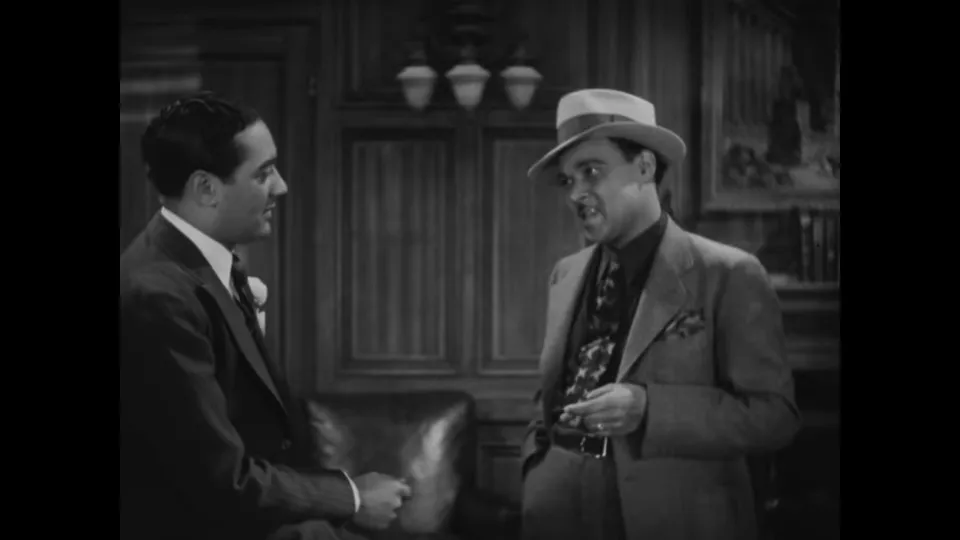
Final Recommendations for Viewers and Scholars
Viewers interested in tracing the roots and branches of the film noir movie should watch Dark Manhattan attentively, noting how the film’s economy of scenes compresses complex social relations into performative gestures and tightly staged confrontations. Scholars should pair the film with archival materials—press coverage of the Lincoln Theater premiere, contemporary reports of numbers operations, and scholarly analyses of Harlem’s representation—to map the cultural networks that produced the film and shaped its reception.
Above all, Dark Manhattan rewards multiple viewings. The film presents a set of dilemmas that unfold both narratively and ethically; understanding its impact requires attention to language (banking discourse applied to numbers), to staging (interiors as sites of power), and to performance (how Curly’s energy reshapes relationships). Because it sits at the intersection of community history and cinematic form, Dark Manhattan is not only a film of its time; it is a document that helps explain why later film noir movie traditions looked, thematically and morally, the way they do.
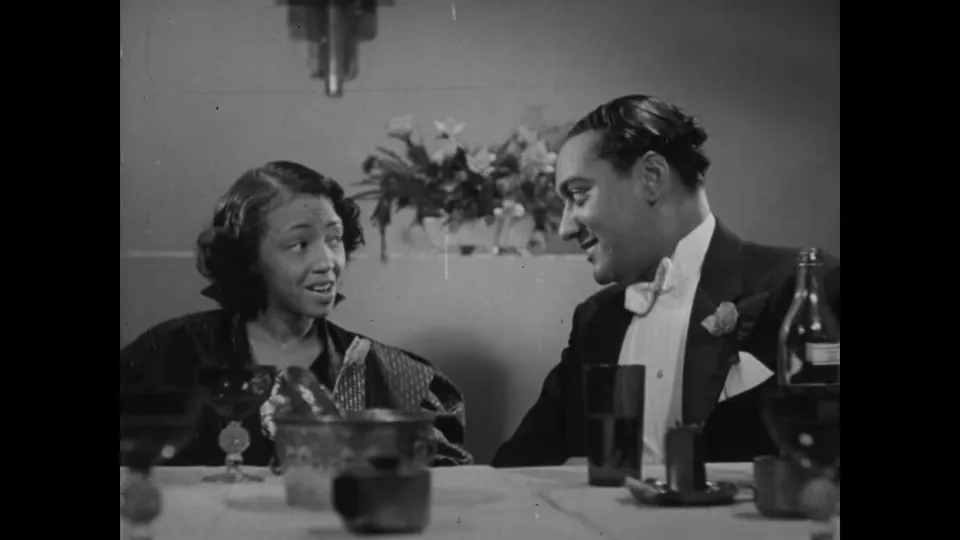
Credits and Further Reading
Primary production details derive from the film’s original credits and period documentation: Dark Manhattan (1937), directed by Harry Fraser; written and executive produced by George Randol; produced by Ralph Cooper and George Randol; cinematography by Arthur Reed; edited by Arthur A. Brooks; music by Ben Ellison and Harvey O. Brooks. The film premiered on January 19, 1937, at the Lincoln Theater and remains the only feature produced by Randol-Cooper Productions.
For anyone compiling a syllabus on the ante-bellum of noir or researching independent Black film production in the 1930s, Dark Manhattan is essential viewing: it offers narrative density, historical specificity, and ethical complexity that repay both popular and scholarly attention. In short, it demands to be read as part of the living archive that informs how the film noir movie tradition originated and with whom it must be associated.
